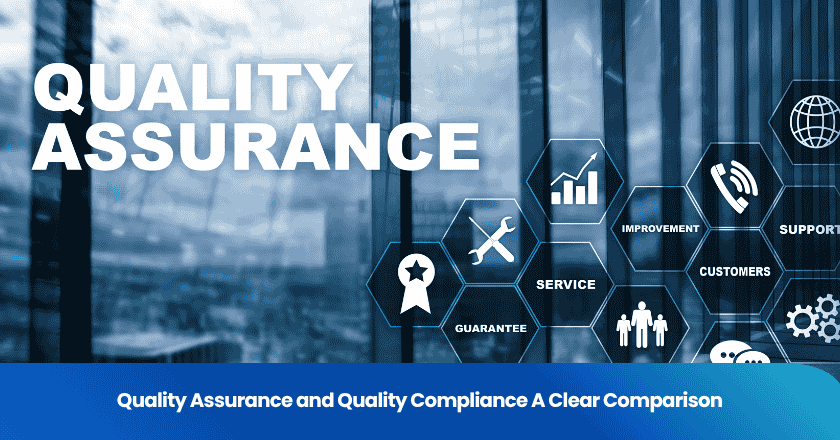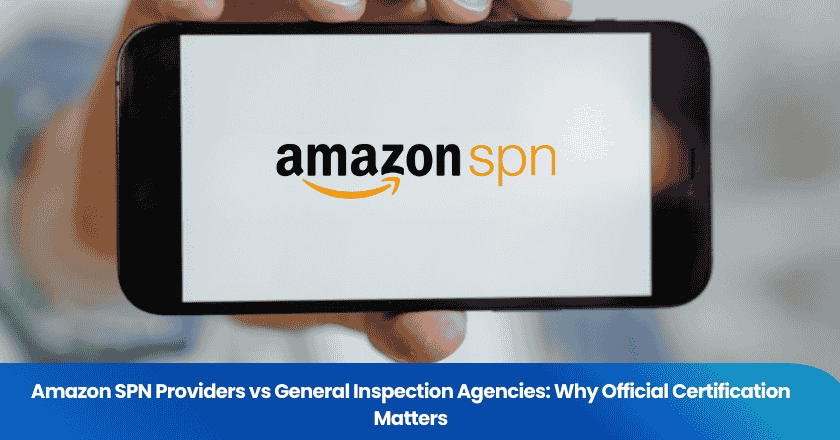
You find the main difference between quality assurance and compliance quality in their focus. Quality assurance aims to prevent defects and improve processes, while compliance quality ensures your organization meets required standards and regulations.
- The Testing, Inspection and Certification market is expanding rapidly, driven by the need for product safety, regulatory compliance, and quality assurance.
- Adopting these practices leads to risk reduction, improved reputation, and greater operational efficiency.
Successful implementation helps you access new markets and make better decisions.
Key Takeaways
- Quality assurance focuses on preventing defects and improving processes to ensure high-quality products.
- Quality compliance ensures that your organization meets legal standards and regulations, maintaining trust with stakeholders.
- Integrating quality assurance and compliance leads to better operational efficiency and helps avoid legal risks.
- Regular audits and evaluations are essential for maintaining compliance and improving quality management.
- Using a quality management system can streamline processes, enhance transparency, and support both quality assurance and compliance efforts.
Quality Assurance
Purpose
You rely on quality assurance to make sure your products and services meet strict quality standards. This systematic approach helps you prevent defects before they reach your customers. In manufacturing, you inspect raw materials, monitor production, and test final products. You set clear quality standards for every step, so you maintain consistency and deliver reliable results. Quality assurance gives you confidence that your processes align with customer expectations and regulatory requirements. You minimize risks and optimize efficiency by focusing on prevention rather than correction.
Quality assurance acts as your safeguard, ensuring every product meets design specifications and safety requirements. You build trust with your customers by consistently delivering high-quality outcomes.
Processes
You implement several processes to uphold quality standards across your organization. Common frameworks include:
- Total Quality Management (TQM)
- Failure Testing
- Process and Product Quality Assurance (PPQA)
- Capability Maturity Model Integration (CMMI)
- Statistical Process Control (SPC)
Each process helps you monitor, measure, and improve your operations. You use these methods to identify issues early, validate results, and maintain compliance with industry quality standards. You document procedures, train your team, and conduct regular inspections. These steps ensure you meet both internal and external quality standards, reducing the chance of errors and increasing overall efficiency.
 Learn more Quality Inspection Standard
Learn more Quality Inspection Standard
Impact
Quality assurance delivers measurable benefits for your business. You see improvements in product reliability and customer satisfaction when you maintain high quality standards. Metrics such as customer satisfaction scores, net promoter scores, and error rates show how your commitment to quality assurance influences user trust and retention. You gain visibility into your processes, making it easier to resolve issues quickly and adjust plans as needed. By driving consistency and meeting quality standards, you enable your business to scale efficiently and comply with regulations. You create a foundation for long-term success by prioritizing quality assurance in every aspect of your operations.
Quality Compliance
Definition
You encounter quality compliance as a critical part of your organization’s operations. Quality compliance means you follow established quality standards and regulations. These standards can come from external authorities or be set internally based on your goals and customer expectations. You create policies and procedures that align with these requirements. An auditable record system supports your efforts, helping you prove that your products and processes meet both regulatory requirements and customer needs. Quality compliance ensures you maintain trust with stakeholders and avoid legal or reputational risks.
Quality compliance is not just about meeting minimum standards. You use it to demonstrate your commitment to excellence and accountability in every aspect of your business.
Legal Requirements
You must understand the legal requirements that shape quality compliance, especially in regulated industries. In the pharmaceutical sector, you face strict rules that govern manufacturing, data integrity, marketing, patient safety, and product efficacy.
The table below highlights key compliance areas:
| Compliance Area | Description |
|---|---|
| Manufacturing practices | Adherence to good manufacturing processes (GMP) covering every aspect of production. |
| Data integrity | Ensuring accurate maintenance of data records, especially from clinical trials. |
| Marketing practices | High standards for marketing products to consumers. |
| Patient safety | Extremely high standards for ensuring product safety for patients. |
| Product quality and efficacy | Compliance with strict regulations related to product quality and efficacy. |
You also follow regulations such as HIPAA, which governs patient health information, and 21 CFR Part 11, which sets criteria for electronic records and signatures. These rules ensure your digital and paper-based systems remain secure and legally binding.
- HIPAA: Manages patient health information.
- 21 CFR Part 11: Ensures electronic records and signatures are reliable.
Audits
You rely on audits to verify quality compliance across your organization. Audits occur at different times and for various reasons. You conduct initial audits before onboarding new suppliers. You schedule regular reviews, such as annual or biennial audits, to maintain ongoing compliance. After significant changes in processes or management, you perform fresh audits. If you encounter non-compliance issues, you use follow-up audits to confirm corrective actions. Risk-based auditing targets high-risk suppliers more frequently. Regulatory changes trigger additional audits, and random or unannounced audits provide a true picture of daily operations.
- Compliance audit: Assesses adherence to regulatory requirements.
- Program audit: Evaluates the effectiveness of specific safety programs.
- Management system audit: Reviews your overall safety management system.
You use these audits to strengthen your quality compliance framework and ensure continuous improvement.
Compliance vs Quality
Roles
You encounter distinct roles when you compare compliance vs quality in your organization. Quality assurance managers focus on preventing defects and driving continuous improvement. They analyze processes, identify root causes, and implement solutions that enhance product reliability. You see them integrating quality into every step, from design to delivery.
Quality compliance officers concentrate on meeting legal and regulatory requirements. They ensure your operations pass audits and inspections. You rely on them to maintain your license to operate in regulated markets. Their role centers on documentation, policy enforcement, and regulatory updates.
In industries such as food, life sciences, medical devices, and healthcare, you notice significant overlap between compliance vs quality functions. Staff often handle both responsibilities, especially in smaller companies. This intersection highlights the practical need for flexibility and broad expertise.
When you examine compliance vs quality, you find:
- Quality assurance managers drive process improvement and defect prevention.
- Quality compliance officers safeguard regulatory adherence and audit readiness.
- Both roles contribute to product safety and organizational reputation.
Responsibilities
You take on different responsibilities depending on your focus within compliance vs quality. Quality assurance tasks include developing standards, training staff, and monitoring production. You investigate failures, collect data, and recommend changes that prevent future issues. Your goal is to build a culture of continuous improvement.
Quality compliance responsibilities involve interpreting regulations, updating policies, and preparing for audits. You document procedures, maintain records, and respond to regulatory changes. You ensure your organization meets all legal requirements and avoids penalties.
Regulatory changes force you to adjust your quality assurance practices to meet new standards. This adaptation is crucial in industries like life sciences and manufacturing. You must stay vigilant to avoid product recalls and financial losses. Compliance vs quality becomes a dynamic relationship, requiring you to balance innovation with strict adherence.
You strengthen your organization by understanding the differences and similarities in compliance vs quality. You create a robust framework that supports both operational excellence and regulatory integrity.
Side-by-Side Comparison Table
| Aspect | Quality Assurance | Quality Compliance |
|---|---|---|
| Primary Focus | Preventing defects, process improvement | Meeting legal and regulatory requirements |
| Key Activities | Monitoring, testing, training | Auditing, documentation, policy enforcement |
| Outcome | Reliable products, customer satisfaction | Regulatory approval, risk mitigation |
| Approach | Proactive, continuous improvement | Reactive, adherence to standards |
| Industry Overlap | Food, life sciences, medical devices, healthcare | Food, life sciences, medical devices, healthcare |
| Response to Change | Adjusts processes for quality | Updates policies for compliance |
Key Distinctions in Compliance vs Quality
- You focus on prevention and improvement in quality assurance.
- You prioritize regulatory adherence in quality compliance.
- You find overlap in industries with strict standards, such as healthcare and food.
- You must adapt both functions when regulations change.
- You rely on both roles to maintain product safety and organizational reputation.
- You see quality assurance as a driver of innovation, while compliance ensures legal operation.
- You use audits to verify compliance, but you use testing and monitoring to assure quality.
- You build trust with customers through quality, and you build trust with regulators through compliance.
- You create a resilient organization by balancing compliance vs quality.
- You achieve long-term success by integrating both approaches into your daily operations.
Quality Control and Compliance Quality
Examples
You see quality control as a hands-on approach that ensures products and services meet specific standards. In the automotive industry, quality control works closely with quality assurance and compliance quality to maintain safety and performance. You use Statistical Process Control and Failure Mode and Effects Analysis to prevent defects and improve efficiency. These methods help you achieve continuous quality improvement, which is a central theme in both quality assurance and quality control.
You find that quality control supports compliance quality by verifying that products meet regulatory requirements. For example, in healthcare organizations, you implement quality control procedures to reduce infection rates and improve patient outcomes. A major hospital reduced wait times by 45% and improved patient satisfaction scores by 35% through streamlined quality control processes. Another hospital achieved a 65% reduction in central line infections by integrating quality control with compliance quality programs. You also notice that audit preparation time decreases and employee satisfaction rises when you optimize quality control workflows.
You rely on quality control to deliver consistent results and support compliance quality across industries. This approach helps you meet customer expectations and regulatory standards.
Integration
You integrate quality control with quality assurance and compliance quality by embedding quality practices at every stage of your operations. You focus on ongoing enhancements based on customer feedback and quality data analysis. You gather feedback regularly and analyze data to update standards. This feedback loop drives continuous improvement and defect prevention.
You use strategies such as implementing QMS software to digitize and automate quality workflows. This ensures alignment with standards like ISO 9001 and supports compliance quality. You establish clear metrics and measurement systems to track quality performance. Daily monitoring of key indicators and digital tools for real-time data collection help you maintain high standards.
| Strategy | Description |
|---|---|
| Implementing QMS Software | Digitizes and automates quality workflows, ensuring alignment with standards like ISO 9001. |
| Continuous Improvement | Focuses on ongoing enhancements based on customer feedback and quality data analysis. |
| Defect Prevention | Proactively identifies and mitigates potential quality issues before they occur. |
You measure the effectiveness of quality control and compliance quality integration by defining clear standards, automating checks, and monitoring data quality metrics. You train your team in technical skills, documentation, and problem-solving to support these efforts. You build a collaborative environment that strengthens both quality control and compliance quality, ensuring your organization meets regulatory requirements and delivers reliable products.
You see clear differences between quality assurance and quality compliance, yet both play vital roles in quality management. Quality assurance focuses on preventing defects and improving processes, while quality compliance ensures you meet regulatory standards. Integrating these approaches brings benefits such as unified assessments, gap identification, and enhanced transparency.
Common challenges include data accessibility issues, resistance to change, and siloed information. You can strengthen your quality management by following these steps:
1. Identify weak areas through audits and error tracking.
2. Set clear benchmarks and standard operating procedures.
3. Use automation tools to streamline checks.
4. Train your team regularly.
5. Conduct ongoing evaluations to drive improvement.
Regular evaluations and continuous improvement position your organization for long-term success and increased customer loyalty.
FAQ
What is a quality management system?
You use a quality management system to organize processes, set standards, and monitor performance. This system helps you maintain consistency, improve efficiency, and meet regulatory requirements. You rely on it to support both quality assurance and quality compliance in your organization.
How does a quality management system support compliance?
You implement a quality management system to document procedures, track changes, and prepare for audits. This system ensures you meet legal and regulatory standards. You use it to demonstrate compliance and maintain trust with regulators and stakeholders.
Why should you integrate quality assurance with a quality management system?
You integrate quality assurance with a quality management system to prevent defects and drive continuous improvement. This approach allows you to monitor results, analyze data, and adjust processes. You achieve higher product reliability and customer satisfaction.
Can a quality management system improve audit outcomes?
You improve audit outcomes by using a quality management system to organize records, automate checks, and standardize workflows. This system helps you identify gaps, correct issues, and maintain readiness for both internal and external audits.
Grow your business with TradeAider Service
Click the button below to directly enter the TradeAider Service System. The simple steps from booking and payment to receiving reports are easy to operate.



 vs. During Production Inspection (DPI) Which Do Sellers Need.png)